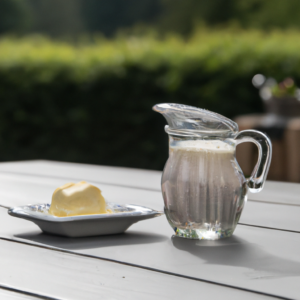Malolactic fermentation is a fancy word for a bacterial process that happens after the first fermentation in wine. This process changes the tart malic acid in grapes into smooth lactic acid by using a bacteria called Oenococcus oeni. This can make the wine taste and feel different, with a creamier, fuller mouthfeel, and flavors that are described as buttery, creamy, or even cheesy.
Winemakers often choose to do malolactic fermentation to make their wines softer and more approachable, especially for wines that are naturally high in acid. But sometimes they don’t want to lose the crisp acidity of certain

wines, so they don’t do it. Malolactic fermentation is affected by things like temperature and pH levels. If the conditions aren’t right, it can produce flavors that are considered off, like buttery or fruity tastes.
To make sure malolactic fermentation goes well, winemakers use different techniques, like controlling the temperature and pH levels of the wine, adding specific bacteria strains, and avoiding oxygen exposure. Some winemakers just let the bacteria that are naturally present in the environment do the work. Malolactic fermentation can also make wine more stable and less likely to spoil, but it can also create some byproducts that may cause headaches or other negative effects in some people. Overall, malolactic fermentation is an important process in winemaking that can affect a wine’s taste, texture, stability, and aging potential.
In the 17th and 18th centuries, wine bottles were sealed with oil-soaked rags stuffed into the neck of the bottle instead of corks. It wasn’t until the 19th century that the cork became the standard wine bottle closure.
Tags, Tags, #hashtags, Tags